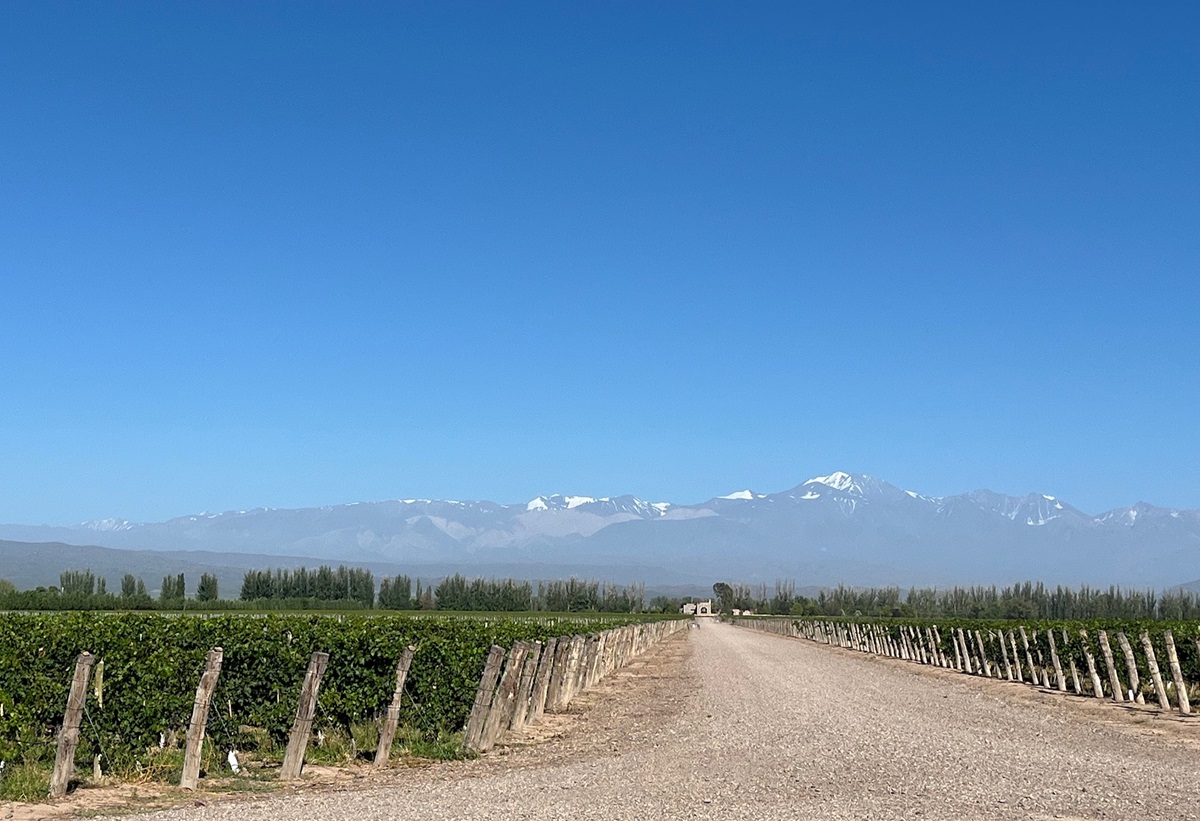AUSTRIAN WINES

By Rose Murray Brown MW Published by The Scotsman 29 February 2020
Austria was on the menu at a recent tasting held in Edinburgh’s Timberyard hosted by German-born Austrian wine expert Anne Krebiehl MW.
It was a fascinating insight into Austria’s diversity and quality – in fact rarely have I been to a tasting when so many sommeliers and winemerchants left raving about the superb quality of the wines. Austrian wine really deserves to be better known outside its own country.
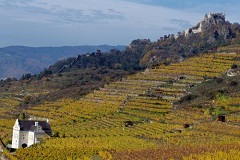 “Modern Austria offers some of the best quality wines in Europe at the lowest yields”, said Krebiehl. “Sizewise Austria is small with 46,515 hectares of vineyards, not much larger than Champagne, Burgundy or New Zealand – and its wine industry is very fragmented with many estates owning less than 40 hectares”, she said.
“Modern Austria offers some of the best quality wines in Europe at the lowest yields”, said Krebiehl. “Sizewise Austria is small with 46,515 hectares of vineyards, not much larger than Champagne, Burgundy or New Zealand – and its wine industry is very fragmented with many estates owning less than 40 hectares”, she said.
“It is an industry that really cares a lot”, explained Krebiehl. “Austria now has the strictest wine laws in the world – the wine industry completely reinvented itself after the ethylene glycol scandal of 1985”.
“They also care about sustainability. Today 147 of Austria’s small artisan family estates are certified organic – and some are biodynamic – which is over one fifth of producers”, she said.
Tasting through Krebiehl’s personal selection of 18 fizz, dry white, red and sweet wines, what really struck me was that this country is a hidden gem – modern Austria offers a treasure trove of little-known quality grapes, fabulous flavours and superb quality.
Austria’s dry whites combine a vivid freshness and ripe fruit potency, this is thanks to its deeply continental climate with cold Alpine winters and warm hot summers, with heat drawn from the east from Hungary’s Pannonian Plain, and cool nights.
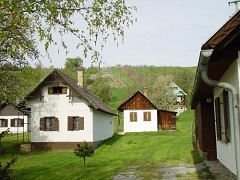 Stylewise, they often remind me of the rich aromatic wines of France’s Alsace region (which has a similarly strong organic focus), but Austrian whites have more body and power – at their best matched with food.
Stylewise, they often remind me of the rich aromatic wines of France’s Alsace region (which has a similarly strong organic focus), but Austrian whites have more body and power – at their best matched with food.
Gruner Veltliner (known as Gru-V) covers 30% of plantings – grown everywhere from Vienna to Burgenland – but the grape is at its best on fine windblown loess soils of Wagram west of Vienna north and south of the Danube.
“In contrast”, said Krebiehl, “Riesling is only planted where it should be in Austria”.
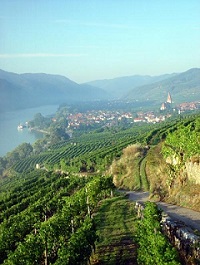 High up on Wachau’s steep slopes and poor soils it reaches an intensity and power which few German producers can achieve.
High up on Wachau’s steep slopes and poor soils it reaches an intensity and power which few German producers can achieve.
Austria’s wine scene is now changing. The new generation of drinkers are demanding more reds – and growers have responded with astoundingly good juicy tangy examples.
My favourite wine of the tasting was from a grape which Krebiehl calls “the sleeper”. Austria’s native Blaufrankisch grape, often referred to as ‘Pinot Noir of the East’, grown on limestone and schist it really reflects where it comes from – best in southern Burgenland (in DAC wine zones, Leithaburg and Eisenberg).
Zweigelt and St Laurent can also offer charmingly fruity characterful reds in Austria’s warmer south – whilst Pinot Noir, which was not represented at the tasting, can be outstandingly good from producers like Anton Bauer, Heinrich Hartl and Erben Ebenauer. The best Austrian wines are not cheap – but lovers of serious dry whites and reds should take note of Austria’s recent wine revolution.
SPARKLING
Niederosterreich: ROSE BRUT SEKT RESERVE NV Fred Loimer (12%)
£18.90 Oddbins
Austrian fizz is not well known, but they have been making it since 1842 and today make 12 million bottles, mostly drunk by the Austrians themselves. Loimer uses biodynamically grown grapes, a blend of 70% Zweigelt, 15% Pinot Noir and 15% St Laurent creating a traditional method fizz: ‘Reserve’ indicates this. Pale pink, yeasty notes, delicacy with good complexity, long dry finish.
DRY WHITES
Wagram: GRUNER VELTLINER FEUERSBRUNN ‘DER OTT’ 2017 Bernhard Ott
£25 Savage Selection
Bernhard Ott is also known as ‘Mr Veltliner’. Celery and fennel notes, fabulous rich creamy, rounded palate, great mouthfeel, complexity, richness. For something cheaper, The Wine Society are listing Ott’s lighter herby juicy ‘Am Berg’ Gruner Veltliner 2018 at just £10.95 per bottle.
Thermenregion: ROTGIPFLER RIED SATZING 2017 Johanneshof Reinisch (14%) ***STAR BUY***
£26 Astrum Wine Cellars; Handford Wines; Solent Cellar
Rare Rotgipfler grown in Satzing vineyard’s rich brown soils is fabulously rich, textured with citric fruits, rich creamy intensity, smoky notes, leesy succulent mouthfeel – matured 20% in amphora, 80% large oak. It often disappears in blends with Zierfandler, but Rotgipfler on its own like this can be sensational.
Wachau: SMARAGD RIESLING RIED LOIBENBERG 2015 Emmerich Knoll (13.5%) ***STAR BUY***
£40 Raeburn Fine Wines; Berry Bros & Rudd; AG Wines
Superb example from very steep warm site giving floral appley nose, very rich intensity, deliciously ripe rounded and elegant, made by legendary Knoll estate. Smaragd indicates the ripest category in Wachau.
REDS
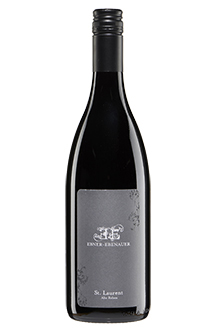 Niederosterreich: ST LAURENT ‘ALTE REBEN’ 2015 Ebner-Ebenauer (13%) ***STAR BUY***
Niederosterreich: ST LAURENT ‘ALTE REBEN’ 2015 Ebner-Ebenauer (13%) ***STAR BUY***
£20 The Wine Society
Light raspberry notes, soft silky rounded, spicy elegant example of 60 year old St Laurent vines from heavy loam soil, made by up-and-coming winemaker .Marion Ebner-Ebenauer.
Carnuntum: ZWEIGELT ‘RUBIN CARNUNTUM’ 2017 Franz & Christine Netzl (13.5%)
£17.89 Alpine Wines
Ripe cherry fruits, rich rounded fleshy, velvet smooth tannins – a lovely example of Austria’s most important red grape, Zweigelt, here grown south of the Danube in new DAC Carnuntum.
Burgenland: BLAUFRANKISCH LUTZMANNSBURG 2015 Moric (14%) ***STAR BUY***
£65 Fine & Rare Wines; Cru World Wine; Clark Foyster
Stunning Blaufrankisch, a blend of seven parcels of old vines, showing the quality of this superb grape: lifted cherry and tea aromas, very intense, concentrated, rich with beautiful finesse and fine tannins – one of Burgenland’s highest priced wines.
SWEET
Burgenland: RUSTER AUSBRUCH CUVEE 2010 Feiler-Artinger (10.5%)
£31 hf bt Fortnum & Mason; £33 Tanners Wines; £38.50 hf bt Bottle Apostle for 2016 vintage
500 buckets of this wine was all that was needed in 1681 to persuade Emperor Leopold to make Rust a Royal Free Town. Talented winemaker Kurt Feiler-Artinger blends 70% Chardonnay and 30% Gelber Muskateller, picking shrivelled grapes in late October with 17 months in French barriques. Toffee caramel notes, apricot richness, rich unctuous sweetness freshened with acidity.
Join Rose’s Fine German Wine Tasting on Thursday 19 March in The Royal Scots Club, Edinburgh £45 www.rosemurraybrown.com
wine tastings
The perfect gift for the wine enthusiast in the family. Rose does In-person tastings too.
cellar advice
Rose does cellar valuations for private clients, valuations for insurers & bespoke portfolio management.
Related stories
March 31, 2024
By Rose Murray Brown MW Published in The Scotsman 30 March 2024 On 2 February 1659, the first wine made from grapes grown in South Africa was crafted by the Governor of the Cape, Jan van Riebeeck. He had planted vines four years earlier in the Company’s Garden near Cape Town from cuttings imported from France. Van Riebeeck’s first
March 24, 2024
By Rose Murray Brown MW Published in The Scotsman 16 March 2024 Heatwaves and bushfires were very much on the agenda when I visited Chile last month as winemakers prepared for their 2024 harvest in blistering heat and drought, with a plume of smoke from the devastating fires lingering over coastal hills. Heat and drought are the greatest challenges
March 23, 2024
By Rose Murray Brown MW Published in The Scotsman 9 March 2024 I have two glasses of Malbec in my hands from the same high-altitude vineyard in Uco valley in Argentina. I am in the Catena Institute of Wine in Mendoza with winemaker Agustin Silva. He has asked me to taste the two wines, both from the 1500m high



